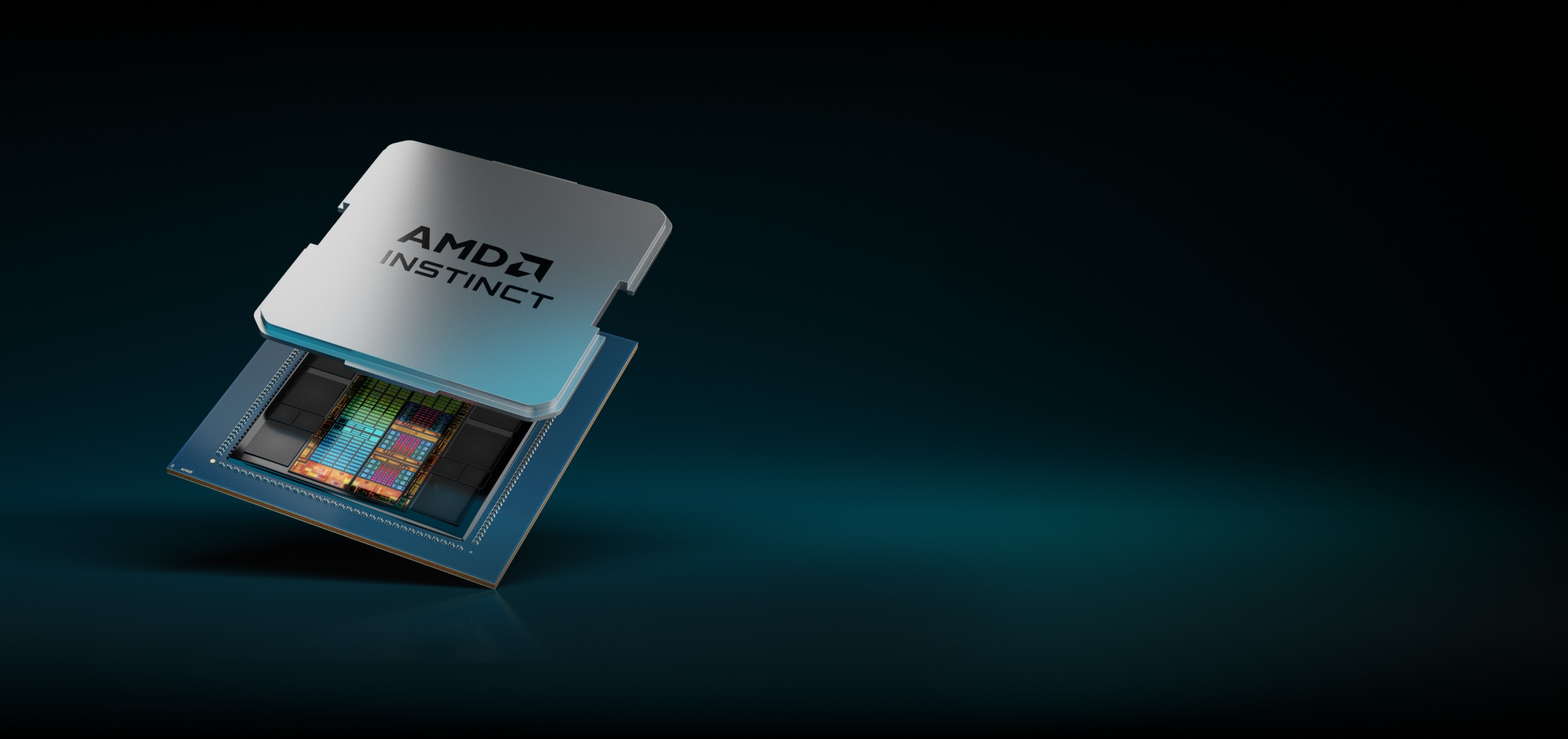
Our Commitment
AMD is driving the future of AI innovation.
AI is helping solve some of the world’s most complex challenges, enabling advances across climate research, healthcare, life sciences, and more. It's important to design, develop, and deploy AI based on a set of principles to build trust in these solutions. As a result, we need to create a framework with guardrails that can help AMD and its customers innovate responsibly.
AMD has developed a Responsible AI framework. It outlines our commitment to protecting users’ confidential information and maintaining data privacy. It also addresses such issues as fairness, inclusion, transparency, reliability, and safety of systems; and preserving human agency through human-centric AI design. As AMD implements AI projects within the company, it has established a Responsible AI Council to help uphold these commitments as the landscape rapidly evolves.


Guiding Principles
Privacy and Security
AI systems, models and data are secure and respect privacy
Human Focused
AI systems are designed to respect human rights and align with human interests
Fair and Inclusive
AI systems are designed to empower everyone and mitigate harmful bias
Safe and Reliable
AI systems demonstrate consistent, safe and secure operation
Transparency
Clarity and openness in AI systems
Accountability
Clear responsibility and auditability exists for AI systems
Explainability
AI systems decision-making is explainable
Sustainability
AI systems are energy efficient
The NIST AI RMF’s definition of AI system is as follows: “AI system is an engineered or machine-based system that can, for a given set of objectives, generate outputs such as predictions, recommendations, or decisions influencing real or virtual environments. AI systems are designed to operate with varying levels of autonomy."

Advancing Responsible AI
AMD is focused on advancing research and development, product design, and collaboration to promote AI innovation for good.


Advancing Research and Development
AMD invests heavily in AI R&D initiatives that help address some of the world’s toughest challenges. Through the AMD Artificial Intelligence and High-Performance Computing Fund, researchers get access to more than 20 petaflops of supercomputing power for advanced HPC and AI research. AMD is a founding partner of the Deepspeed4Science Initiative a platform for enabling large-scale scientific discovery that was co-founded with Microsoft, Argonne National Laboratory, Oak Ridge National Laboratory, Brookhaven National Laboratory, Columbia University, and others. AMD also collaborates closely with pioneering institutions like the Allen Institute for AI .
Another way AMD is helping to advance AI research is by powering some of the world’s fastest supercomputers, including Lawrence Livermore National Laboratory’s El Capitan .1 One early project, CosmoFlow, will couple deep learning and traditional HPC simulation methods to give researchers the ability to probe more deeply and learn about the universe at scale.


Advancing Product Design
Realizing the full potential of AI requires massive compute capability—significantly increasing demands on the power supply. AMD solutions can deliver the required compute resources in an energy-efficient manner. We are on track to achieve our five-year goal of a 30X increase in energy efficiency by 2025 for processors and accelerators powering servers for HPC and AI training. This goal is based on a baseline for energy efficiency set with AMD EPYC 7002 CPUs paired with AMD Instinct MI50 GPUs, and represents a 2.5X acceleration of the industry trends from 2015-2020 as measured by the worldwide energy consumption for these computing segments. With the latest performance data, we have achieved a 13.5X improvement towards our goal using a configuration of four AMD Instinct™ MI300A APUs.2
AMD is also a member of the Confidential Computing Consortium , which helps accelerate the adoption of confidential computing through open-source collaboration and standards. Recently, AMD announced open-source security firmware for secure encrypted virtualization.
Advancing Collaboration and Standards
Industry and community collaboration is an important aspect of Responsible AI because it enables greater transparency. It also enables more widespread access and a proliferation of the latest advancements. The open-source community is the true driver of the speed and breadth of AI innovation. That is why AMD is working closely with open-source innovators such as Hugging Face, PyTorch, DeepSpeed, and others to build tools, libraries, and more.
AMD is also collaborating with industry peers on public policy issues. For example, AMD is advocating for Responsible AI principles through work with industry consortia including the Responsible AI Institute , the NIST AI Safety Institute, and the AI Alliance .



AMD AI Solutions in Action
Discover how AMD AI solutions are advancing socially conscious AI use cases across fields such as healthcare, climate change, and education.
Healthcare
Climate Change
Climate Research
By using AI to analyze massive and complex data sets, scientists can learn insights into the causes of climate change and even predict the impact of extreme weather to help save lives. The Meteo France Supercomputer and the LUMI Supercomputer—both on the Top 500 list and powered by AMD—are advancing weather and climate research.1
Academia and Community Outreach
Creating a Better Future Together
AMD fosters strategic relationships with researchers, nonprofits, educators, and students who are positioned to develop the groundbreaking innovations of tomorrow. Whether it is donating technology to help develop students’ sense of discovery or enabling scientists to responsibly push the boundaries of what is possible, AMD believes that when processing power meets brainpower, the future comes alive.
Our Goal and Progress
100 million people to benefit from AMD and AMD Foundation philanthropy and partnerships that enable STEM education, scientific research, and the workforce of the future from AMD donations initiated by 2025 (base year 2020).
Since 2020, more than 150 universities, research institutions, and non-profit organizations have received donated AMD technology through our AI and HPC Fund and STEM initiatives, benefiting approximately 61 million people through scientific research and education.3
AMD University Program
The AMD University Program supports universities using AMD technologies in their teaching, research, and other engagements. The program provides students, researchers and educators with the latest technologies, products, and tools from AMD.
Responsible AI Use Policy
AMD is committed to the responsible use of its Artificial Intelligence (AI) products and technologies (“AMD AI”). If you use any AMD AI, you are agreeing to use the AMD AI in compliance with applicable laws and in accordance with the AMD Responsible AI Use Policy.

Footnotes
- Top 500 List, November 2023
- EPYC-030a: Calculation includes 1) base case kWhr use projections in 2025 conducted with Koomey Analytics based on available research and data that includes segment specific projected 2025 deployment volumes and data center power utilization e¬ectiveness (PUE) including GPU HPC and machine learning (ML) installations and 2) AMD CPU and GPU node power consumptions incorporating segment-specific utilization (active vs. idle) percentages and multiplied by PUE to determine actual total energy use for calculation of the performance per Watt. 13.5x is calculated using the following formula: (base case HPC node kWhr use projection in 2025 * AMD 2023 perf/Watt improvement using DGEMM and TEC +Base case ML node kWhr use projection in 2025 *AMD 2023 perf/Watt improvement using ML math and TEC) /(2020 perf/Watt * Base case projected kWhr usage in 2025). For more information, https://www.amd.com/en/corporate/corporate-responsibility/data-center-sustainability.html.
- The time period for the Digital Impact goal includes donations made after January 1, 2020 and initiated by December 31, 2025. “Initiated” is defined as AMD and the recipient organization reaching an agreement on an AMD donation, which must be delivered by July 30, 2026. Reported data includes: direct beneficiaries defined as students, faculty, or researchers with direct access to AMD-donated technology, funding, or volunteers; and indirect beneficiaries defined as individuals with a reasonable likelihood of receiving research data formulated through AMD-donated technology and potentially gaining useful insights or knowledge. AMD conducts annual surveys with recipient organizations to estimate direct beneficiaries, and in the case of the AI & HPC Fund, indirect beneficiaries as well. To address gaps and/or inconsistencies in survey responses, AMD uses an economic-based impact assumption to estimate the total number of indirect beneficiaries (not applied to direct beneficiaries) by dividing the total market-value of donations in a given years by the total reported indirect beneficiary values from recipients’ surveys for the same year. The data shows the ratio is 1.08 on average for the 3 years of data available (2021, 2022, 2023). Therefore, AMD assumes for every $1M USD of market-value donated, approximately 1.08 million people will indirectly benefit. AMD also assumes that the annual estimated indirect beneficiaries in year 1 continues to reach additional individuals in year 2 and year 3, but at a reduced rate. The impact depreciation rate assumes year 2 beneficiaries amount to 50% of year 1 estimates, and year 3 beneficiaries amount to 25% of year 1 estimates. AMD goal calculations are third-party verified (limited level assurance) based on data supplied by recipient organizations, which is not independently verified by AMD, and AMD economic-based impact models based on data supplied by recipient organizations.
- Top 500 List, November 2023
- EPYC-030a: Calculation includes 1) base case kWhr use projections in 2025 conducted with Koomey Analytics based on available research and data that includes segment specific projected 2025 deployment volumes and data center power utilization e¬ectiveness (PUE) including GPU HPC and machine learning (ML) installations and 2) AMD CPU and GPU node power consumptions incorporating segment-specific utilization (active vs. idle) percentages and multiplied by PUE to determine actual total energy use for calculation of the performance per Watt. 13.5x is calculated using the following formula: (base case HPC node kWhr use projection in 2025 * AMD 2023 perf/Watt improvement using DGEMM and TEC +Base case ML node kWhr use projection in 2025 *AMD 2023 perf/Watt improvement using ML math and TEC) /(2020 perf/Watt * Base case projected kWhr usage in 2025). For more information, https://www.amd.com/en/corporate/corporate-responsibility/data-center-sustainability.html.
- The time period for the Digital Impact goal includes donations made after January 1, 2020 and initiated by December 31, 2025. “Initiated” is defined as AMD and the recipient organization reaching an agreement on an AMD donation, which must be delivered by July 30, 2026. Reported data includes: direct beneficiaries defined as students, faculty, or researchers with direct access to AMD-donated technology, funding, or volunteers; and indirect beneficiaries defined as individuals with a reasonable likelihood of receiving research data formulated through AMD-donated technology and potentially gaining useful insights or knowledge. AMD conducts annual surveys with recipient organizations to estimate direct beneficiaries, and in the case of the AI & HPC Fund, indirect beneficiaries as well. To address gaps and/or inconsistencies in survey responses, AMD uses an economic-based impact assumption to estimate the total number of indirect beneficiaries (not applied to direct beneficiaries) by dividing the total market-value of donations in a given years by the total reported indirect beneficiary values from recipients’ surveys for the same year. The data shows the ratio is 1.08 on average for the 3 years of data available (2021, 2022, 2023). Therefore, AMD assumes for every $1M USD of market-value donated, approximately 1.08 million people will indirectly benefit. AMD also assumes that the annual estimated indirect beneficiaries in year 1 continues to reach additional individuals in year 2 and year 3, but at a reduced rate. The impact depreciation rate assumes year 2 beneficiaries amount to 50% of year 1 estimates, and year 3 beneficiaries amount to 25% of year 1 estimates. AMD goal calculations are third-party verified (limited level assurance) based on data supplied by recipient organizations, which is not independently verified by AMD, and AMD economic-based impact models based on data supplied by recipient organizations.
